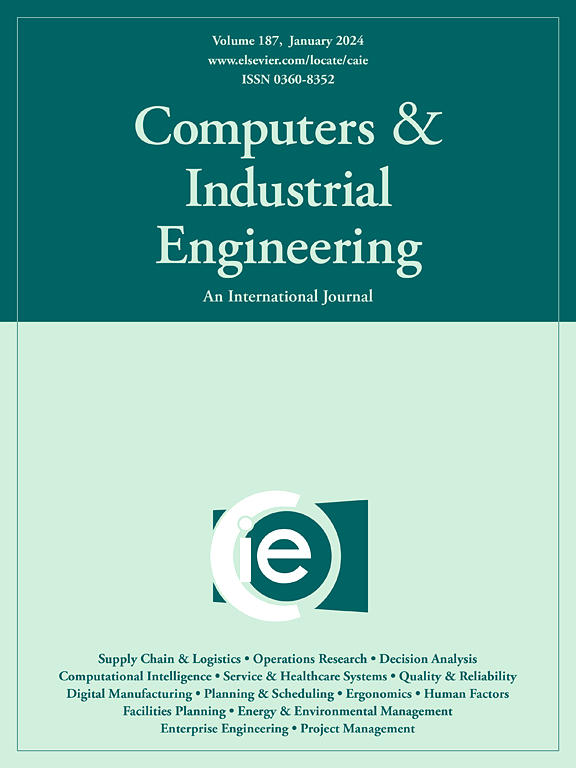Balancing human–robot collaborative assembly lines: A constraint programming approach
IF 6.7
1区 工程技术
Q1 COMPUTER SCIENCE, INTERDISCIPLINARY APPLICATIONS
引用次数: 0
Abstract
The advent of Industry 5.0 and advancements in collaborative robot (cobot) technology have driven many industries to adopt human–robot collaboration (HRC) in their assembly lines. This collaborative approach, which combines human expertise with robotic precision, necessitates an optimized method for balancing and scheduling tasks and operators across stations. This study proposes various constraint programming (CP) models tailored to straight and U-shaped assembly layouts, with objectives such as minimizing the number of stations, reducing cycle time, and minimizing costs. To enhance real-world applicability, the models consider the presence of diverse humans and cobots with varying skills and energy requirements working collaboratively or concurrently on assembly tasks. Additionally, practical constraints are addressed, including robot tool changes, zoning, and technological needs. Computational results demonstrate the superior efficiency of the proposed CP models over state-of-the-art mixed-integer programming models, validated through a case study and a comprehensive set of test problems. The results indicate that U-shaped layouts offer greater flexibility than straight-line configurations, particularly in reducing cycle time. Furthermore, higher HRC levels, including more humans and cobots, can significantly improve the number of stations, cycle time, and cost by up to 50%, 29%, and 36%, respectively.
平衡人机协作装配线:一种约束编程方法
工业5.0的出现和协作机器人(cobot)技术的进步促使许多行业在其装配线中采用人机协作(HRC)。这种协作方法结合了人类的专业知识和机器人的精度,需要一种优化的方法来平衡和调度跨站的任务和操作员。本研究提出了针对直线和u形装配布局的各种约束规划(CP)模型,其目标包括最小化工位数量、缩短周期时间和最小化成本。为了增强现实世界的适用性,这些模型考虑了具有不同技能和能量需求的不同人类和协作机器人的存在,这些人类和协作机器人协作或并发地完成组装任务。此外,还解决了实际限制,包括机器人工具的更改、分区和技术需求。计算结果表明,所提出的CP模型比最先进的混合整数规划模型更有效,并通过一个案例研究和一组综合测试问题得到了验证。结果表明,u型布局比直线布局具有更大的灵活性,特别是在缩短周期时间方面。此外,更高的HRC水平,包括更多的人力和协作机器人,可以显著提高工作站数量、周期时间和成本,分别可提高50%、29%和36%。
本文章由计算机程序翻译,如有差异,请以英文原文为准。
求助全文
约1分钟内获得全文
求助全文
来源期刊

Computers & Industrial Engineering
工程技术-工程:工业
CiteScore
12.70
自引率
12.70%
发文量
794
审稿时长
10.6 months
期刊介绍:
Computers & Industrial Engineering (CAIE) is dedicated to researchers, educators, and practitioners in industrial engineering and related fields. Pioneering the integration of computers in research, education, and practice, industrial engineering has evolved to make computers and electronic communication integral to its domain. CAIE publishes original contributions focusing on the development of novel computerized methodologies to address industrial engineering problems. It also highlights the applications of these methodologies to issues within the broader industrial engineering and associated communities. The journal actively encourages submissions that push the boundaries of fundamental theories and concepts in industrial engineering techniques.
 求助内容:
求助内容: 应助结果提醒方式:
应助结果提醒方式:


